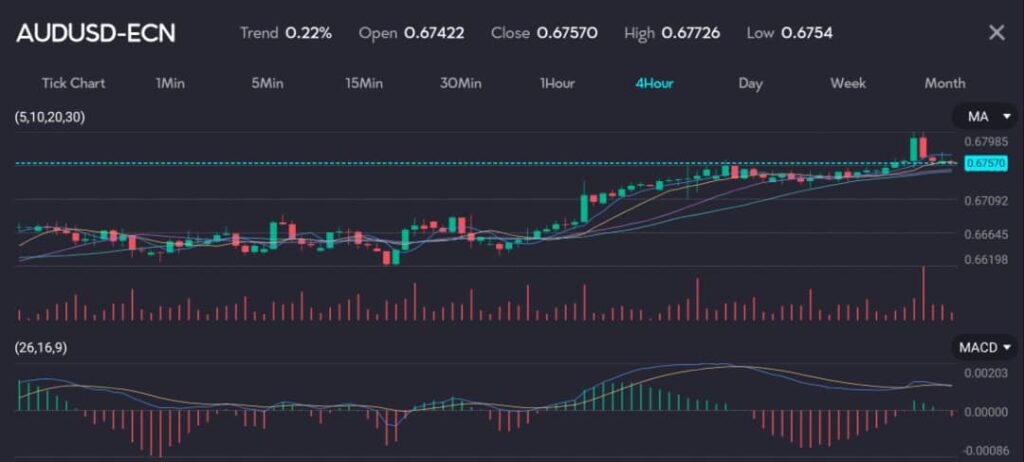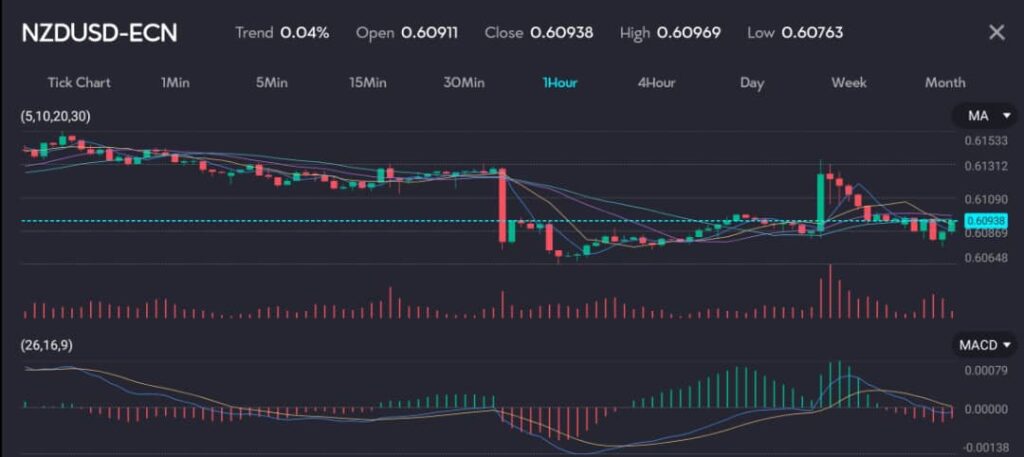Key points:
- The Australian dollar surged to a six-month peak while the New Zealand dollar dropped amid changing rate cut expectations.
- Market volatility driven by U.S. inflation data impacted the Australian and New Zealand dollars differently.
The Australian dollar held near six-month peaks on Friday, driven by market speculation around potential U.S. rate cuts. In contrast, the New Zealand dollar experienced significant declines due to expectations of steeper cuts domestically.
Aussie gains, Kiwi struggles

See: Aussie on the rise as seen on the VT Markets app.
The Aussie stood at $0.6762, after hitting a high of $0.6799 overnight. Support levels are identified around $0.6714, with resistance up at a high from last December at $0.6871. This positioning reflects market confidence in the Australian economy amidst U.S. monetary policy adjustments.

Picture: Kiwi sees a decline, trading at 0.60938 on the VT Markets app.
On the other hand, the New Zealand dollar wallowed at $0.6087, having shed 0.9% for the week so far. Key support levels are noted at $0.6065 and $0.6018, indicating a bearish trend driven by domestic monetary policy outlooks.
Market action was significantly influenced by dramatic fluctuations in the Japanese yen, which surged against the U.S. dollar following a softer-than-expected U.S. inflation report. This sparked speculation about potential government intervention, leading to the Aussie dollar pulling back to 107.55 yen after touching a 33-year high of 109.67 overnight.
You might be interested: Aussie strengthens against the Kiwi and Yen amidst diverging rate outlooks
U.S. inflation data shifts RBA rate hike expectations
The U.S. inflation data also impacted expectations for the Reserve Bank of Australia’s (RBA) policy moves. Futures markets now imply only a 14% chance of an RBA hike at its August meeting, down from 40% just a couple of weeks ago. While markets foresee minimal chances of easing until next July, they are pricing in at least two U.S. rate cuts this year.
Consequently, Australian 10-year bond yields fell to a two-week low of 4.322%, yet the spread over U.S. Treasuries widened to 14 basis points from -40 basis points in April. This movement has driven the Australian dollar’s trade-weighted index (TWI) to climb for four consecutive weeks, hitting a two-year high.
The increase in the TWI might begin to exert downward pressure on the RBA’s GDP and inflation forecasts over a one-year plus horizon. The upcoming second-quarter consumer price report due on July 31 will be crucial, with inflation expected to edge higher.
RBNZ hints at easing, causing sharp drop in swap rates
Across the Tasman Sea, market dynamics have shifted in the opposite direction. The Reserve Bank of New Zealand (RBNZ) surprised markets by suggesting the possibility of easing monetary policy. This led to a significant drop in two-year swap rates, which fell 39 basis points for the week, the largest decline since early 2011.
These currency movements highlight the divergent economic paths and monetary policy expectations in Australia and New Zealand. Traders and investors should monitor upcoming economic data releases and central bank announcements closely, as they will play a pivotal role in shaping future market trends and currency valuations.
Start trading now — click here to create your live VT Markets account.









